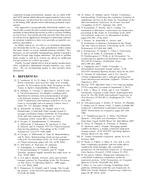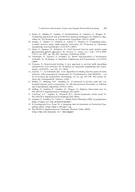PDF-Dynamic Partitioning of Large Multicomputer Systems HansUlrich Heiss Department of Informatics
Author : min-jolicoeur | Published Date : 2014-12-18
We regard the problem as a twodimensional resource allo cation problem for which different algorithms are pro posed Results from simulation experiments indicate
Presentation Embed Code
Download Presentation
Download Presentation The PPT/PDF document "Dynamic Partitioning of Large Multicompu..." is the property of its rightful owner. Permission is granted to download and print the materials on this website for personal, non-commercial use only, and to display it on your personal computer provided you do not modify the materials and that you retain all copyright notices contained in the materials. By downloading content from our website, you accept the terms of this agreement.
Dynamic Partitioning of Large Multicomputer Systems HansUlrich Heiss Department of Informatics: Transcript
Download Rules Of Document
"Dynamic Partitioning of Large Multicomputer Systems HansUlrich Heiss Department of Informatics"The content belongs to its owner. You may download and print it for personal use, without modification, and keep all copyright notices. By downloading, you agree to these terms.
Related Documents














